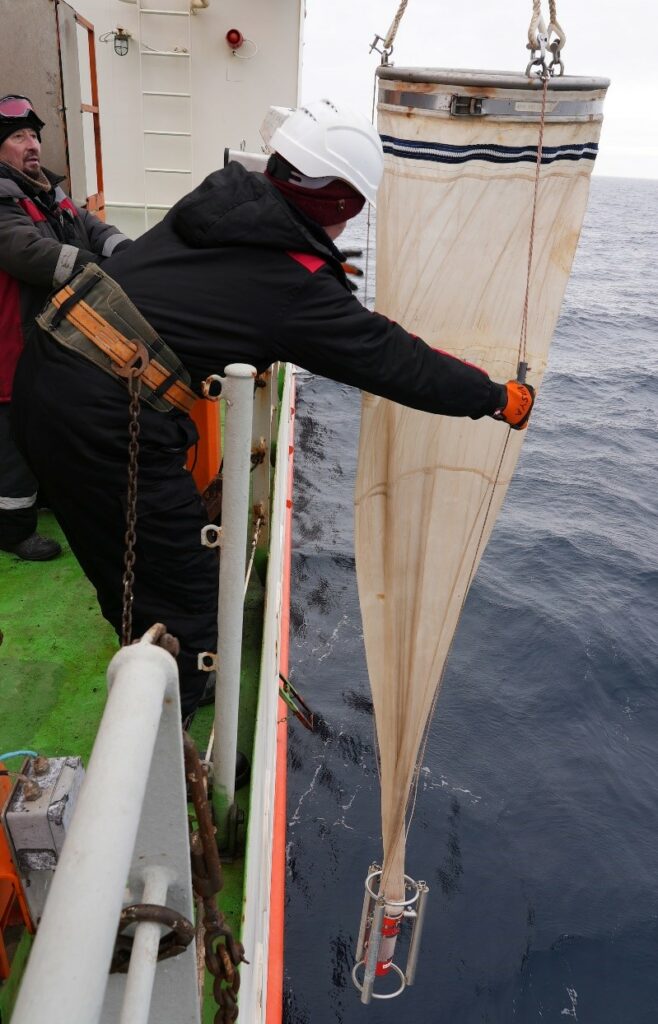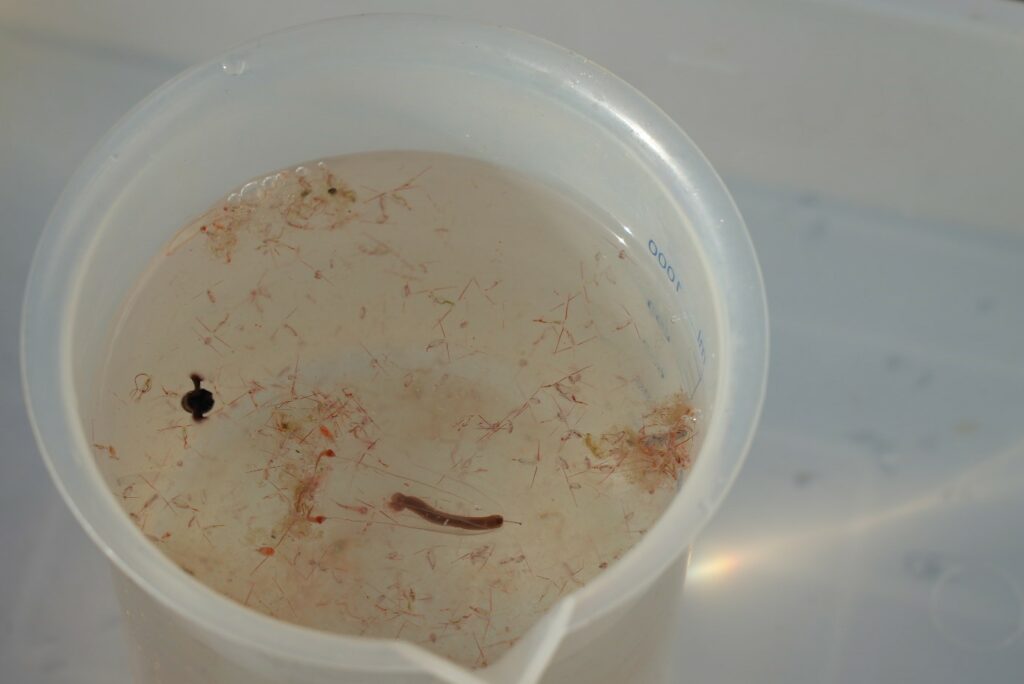79.55° North, 101.43° East – Cloudy, -2.8 °C, wind speed: 1.6 m/s
Understanding the organic carbon cycle in the Kara and Laptev Seas
During the Arctic Century Expedition, scientific teams from Russia, Germany and Switzerland have joined forces to study the biological processes involved in the cycling of carbon along the food chain of the Kara and Laptev Seas. Unlike in most other marine ecosystems, sea ice and low water temperature play crucial roles in the Arctic, because these features define short periods when plants can grow at sea and slow natural recycling of organic matter. These teams will investigate regional peculiarities of the recycling and transformation of carbon on the basis of the data collected along the oceanographic transects.
The study of the regional carbon cycle starts with the sunlit upper layer of the sea, where phytoplankton, small floating unicellular algae, can thrive by converting sunlight and mineral carbon into organic matter in a process called photosynthesis. Phytoplankton are the primary producers of organic carbon pumped into the regional food chain. The next trophic level in the sea is zooplankton. These small animals drift in the water while feeding on phytoplankton. In turn, they are the main suppliers of organic matter and energy for all of the bigger animals living in and from the Kara and Laptev Seas, such as fish, walruses, birds and polar bears. The measurement of the amount (biomass) and productivity of both the phyto- and zooplankton are key aspects being studied during the expedition, helping to assess the internal supply of organic carbon cycling in the system and to assess its future changes.

A further source of organic carbon in the region are rivers such as the Ob and Yenisey, which carry dissolved organic material from continental Russia and drain into the Kara Sea. As the thaw of permafrost increases, more organic material may run into the river, meaning this might become an increasingly significant source of organic carbon in the near future. Some of this carbon is decomposed by bacteria and pumped into the marine food chain, with the leftovers sinking to the seabed, supplying food to the very abundant and diverse benthic biota.
Changes in the regional carbon cycle, induced by climate and environmental change, might in turn increase the fish stock and diversity, which so far remains very low. Ongoing changes are investigated by analysing the genetic material found in seawater, because fish concentration is currently too low to be measured efficiently by traditional fisheries methods.
The study of all these aspects will improve our understanding of the role of sea life in the carbon and nutrient cycles of the Kara and Laptev Seas. The quantification of these fluxes will determine whether the Kara and Laptev Seas are a source of carbon to the atmosphere, or act as a sink by trapping carbon in the marine sediments. Such information is critical to improve the existing global climate models. The different scientific teams working on these questions all contribute pieces of this complex puzzle.

Header photograph: Diverse life collected with sea floor sediments from the Kara Sea.
Rights: © 2021 Swiss Polar Institute, CC BY 4.0 